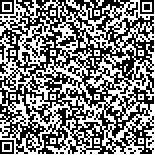本文已被:浏览 1438次 下载 170次
投稿时间:2024-06-17 网络发布日期:2024-10-20
投稿时间:2024-06-17 网络发布日期:2024-10-20
中文摘要: 目的 研究三阴性乳腺癌(TNBC)细胞中人类白细胞抗原-G(HLA-G)表达与T细胞活化发挥免疫抑制功能的机制。
方法 在三组乳腺癌细胞系(MDA-MB-231,HCC1937,MDA-MB-468)中,实时定量聚合酶链式反应(RT-qPCR)、Western blot检测并筛选出HLA-G高表达,纤维蛋白原样蛋白1(FGL1)、程序性死亡因子配体1(PD-L1)、唾液酸结合免疫球蛋白样凝集素15(SIGLEC15)低表达的乳腺癌细胞系为HCC1937;将HCC1937细胞分为NC组(对照组)与KD组(敲减组),进行RNA干扰(RNAi)慢病毒载体构建并转染KD组细胞以敲减HLA-G基因,且进行验证。HCC1937细胞分别进行HLA-G抗体封闭/未封闭处理,Jurkat细胞分别进行CD3、CD28激活/未激活处理,两种细胞共培养分为8组: NC--组、KD--组、NC+-组、KD+-组、NC-+组、KD-+组、NC++组和KD++组;细胞划痕实验、MTT法、ELISA法分别检测各组细胞迁移率、增殖率以及细胞上清液的干扰素(IFN)-γ、白细胞介素(IL)-2水平。
结果 RT-qPCR提示HCC1937细胞HLA-G基因敲减成功;KD++组迁移率较NC++组显著增高(P<0.05),但每对共培养组间细胞增殖率差异无统计学意义(P>0.05);KD++组的IFN-γ浓度较NC++组、NC-+组显著降低(P<0.05),但每对共培养组间IL-2浓度差异无统计学意义(P>0.05)。
结论 TNBC细胞HLA-G可能促进活性T细胞分泌IFN-γ,HLA-G降低后IFN-γ抑制T细胞免疫功能,促进肿瘤转移。
Abstract:ObjectiveTo investigate the mechanism of human leukocyte antigen-G (HLA-G) expression and T cells activation in triple-negative breast cancer(TNBC) cells to exert immunosuppressive function.
Methods From three groups of breast cancer cell lines(MDA-MB-231,HCC1937, MDA-MB-468),real-time quantitative polymerase chain reaction (RT-qPCR) and Western blot were detected and screened that the breast cancer cell line was HCC1937,which with high expression of HLA-G, and low expression of fibrinogen-like protein 1 (FGL1), programmed death factor ligand 1 (PD-L1), as well as sialic acid-binding immunoglobulin-like lectin 15 (SIGLEC15) . HCC1937 cells were divided into NC group (control group) and KD group (knockdown group), and RNA interference (RNAi) lentiviral vectors were constructed and transfected into KD cells to knock down HLA-G gene, and the verification was carried out. HCC1937 cells were treated with HLA-G antibody blocking/nonblocking, and Jurkat cells were treated with CD3 and CD28 activation/non-activation, respectively, and the two types of cells were co-cultured into 8 groups: NC--, KD--, NC+-, KD+-, NC-+, KD-+, NC++, and KD++ groups. Cell scratch assay, MTT and ELISA method were used to detect cell migration rate, proliferation rate, and interferon (IFN)-γ and interleukin (IL)-2 levels in cell supernatants, respectively.
Results RT-qPCR showed that the HLA-G gene was successfully knocked down in HCC1937 cells. Compared with the NC++ group, the migration rate of the KD++ group was significantly increased (P<0.05), but there was no statistical difference in the cell proliferation rate between each pair of co-culture groups (P>0.05). The concentration of IFN-γ in the KD++ group was lower than that in the NC++ group and the NC-+ group (P<0.05), but there was no significant difference in the concentration of IL-2 between each pair of co-culture groups (P>0.05).
Conclusion HLA-G in TNBC cells may promote the secretion of IFN-γ by activing T cells, and IFN-γ can inhibit the immune function of T cells and promote tumor metastasis after HLA-G decreased.
keywords: Triple-negative breast cancer Human leukocyte antigen-G T cell Interferon-γ Interleukin-2 Immune function
文章编号: 中图分类号:R737.9 文献标志码:A
基金项目:成都医学院校基金项目(CYZ19-20)
附件
引用文本:
李晓诗,罗琴,周庆,钟科,蒋安科,夏林玉,胡清林.三阴性乳腺癌人类白细胞抗原-G抑制T细胞免疫功能机制的研究[J].中国临床研究,2024,37(10):1499-1505.
李晓诗,罗琴,周庆,钟科,蒋安科,夏林玉,胡清林.三阴性乳腺癌人类白细胞抗原-G抑制T细胞免疫功能机制的研究[J].中国临床研究,2024,37(10):1499-1505.
